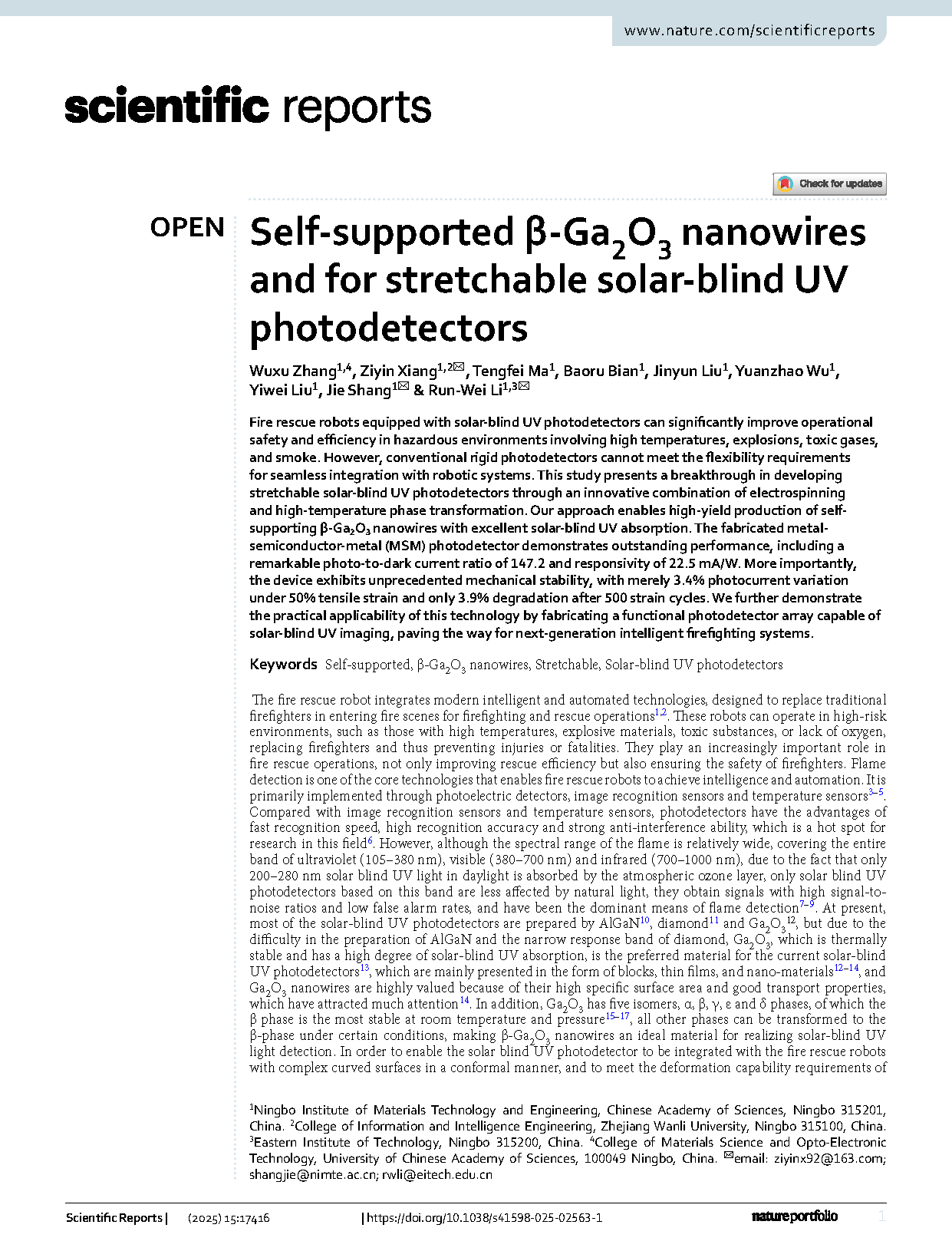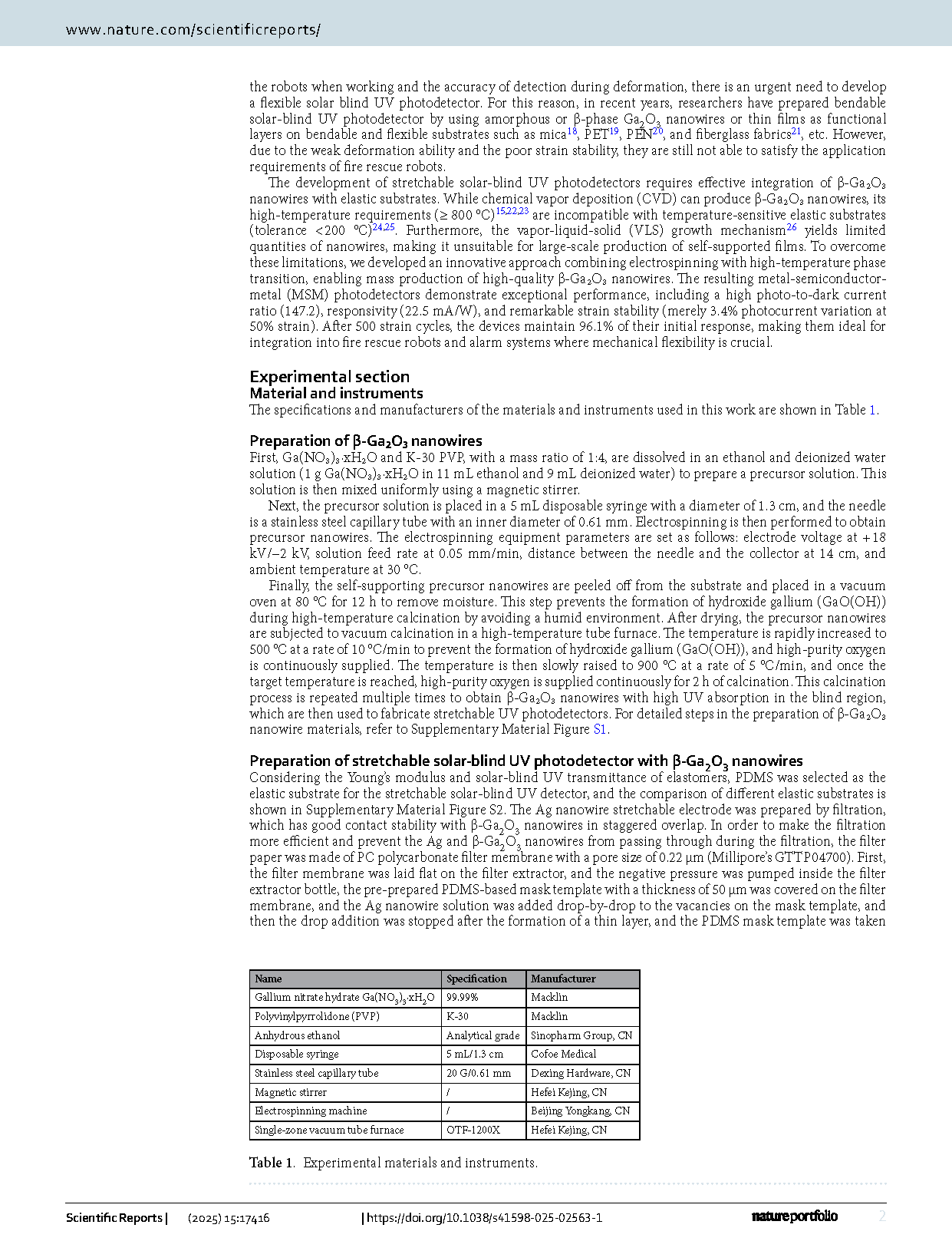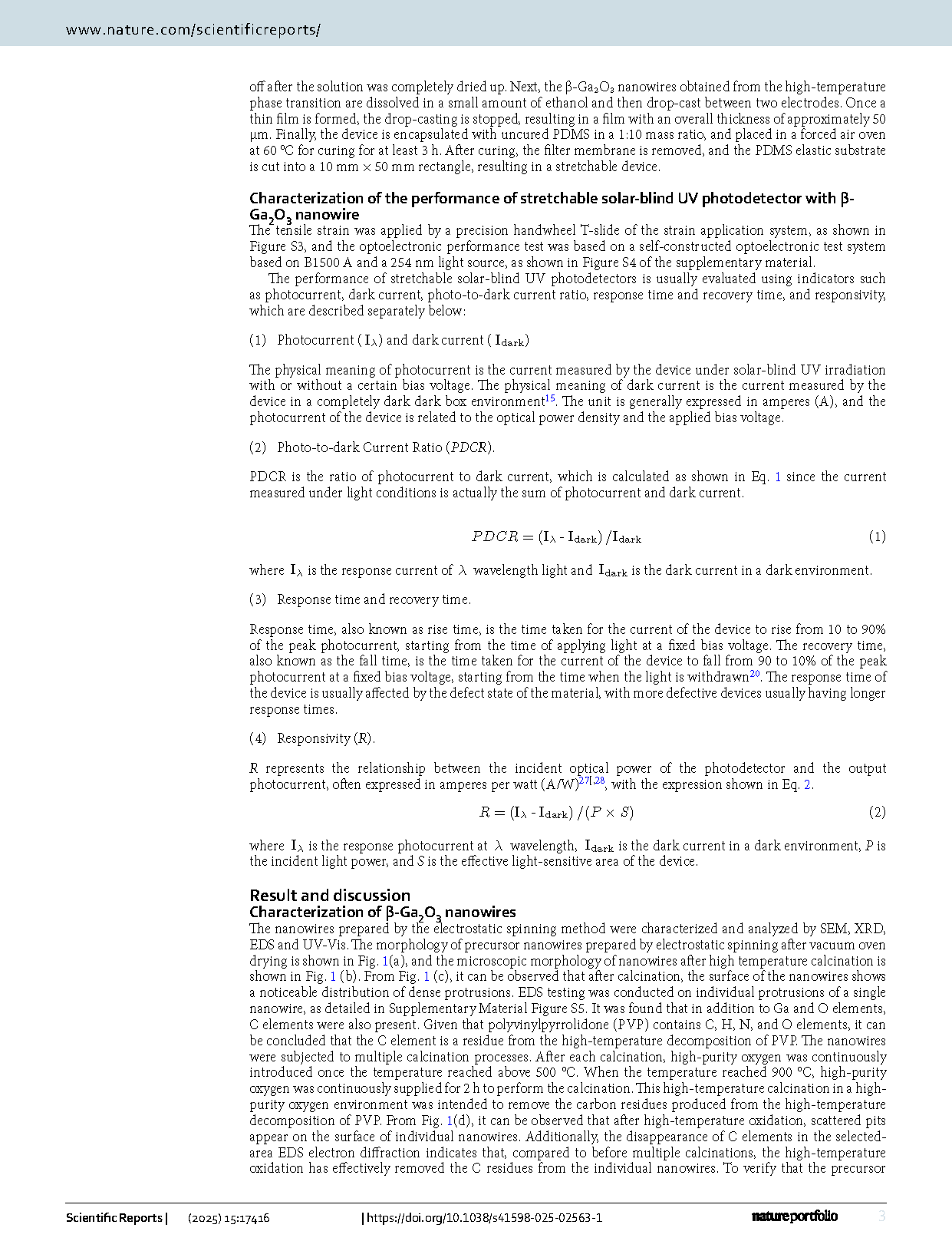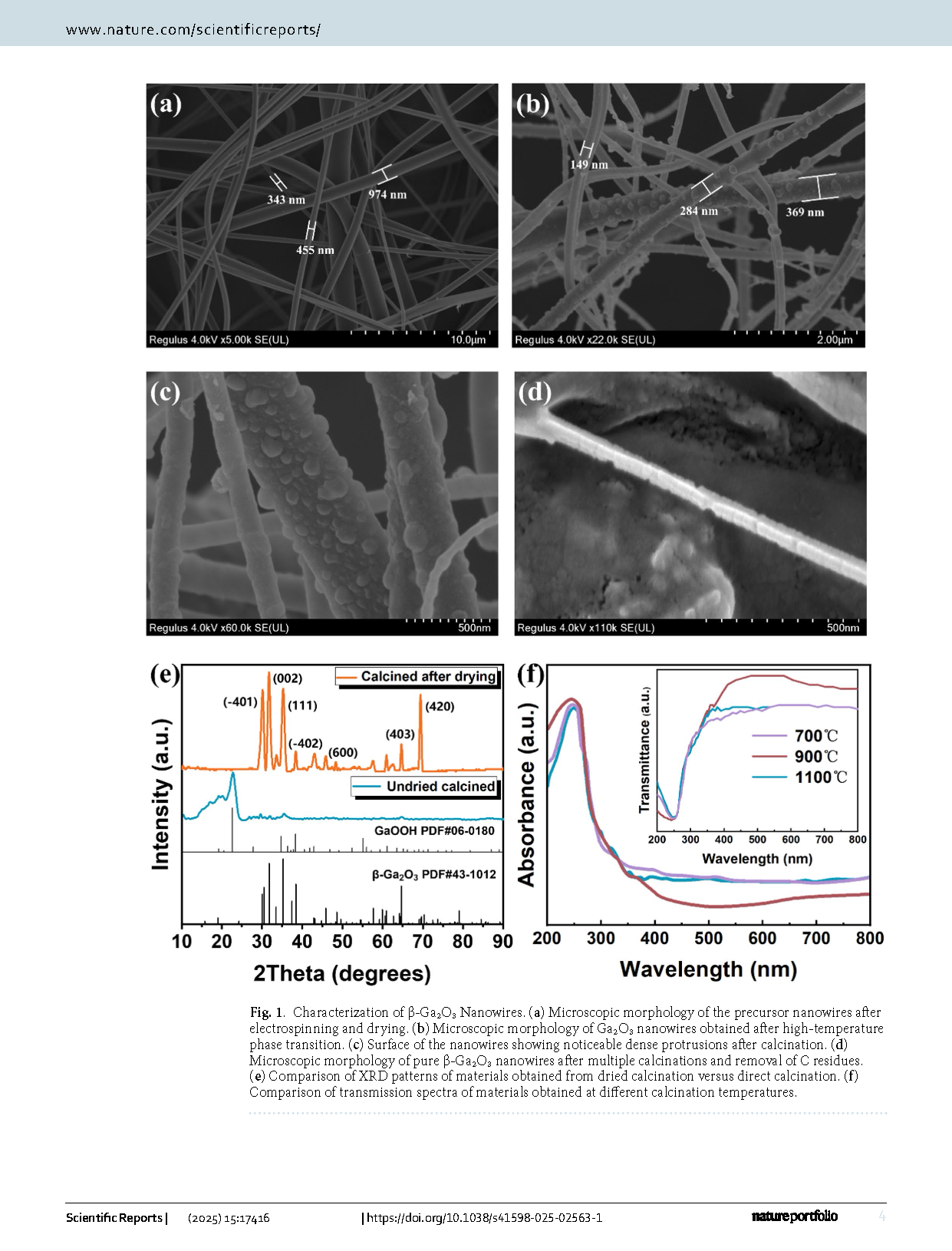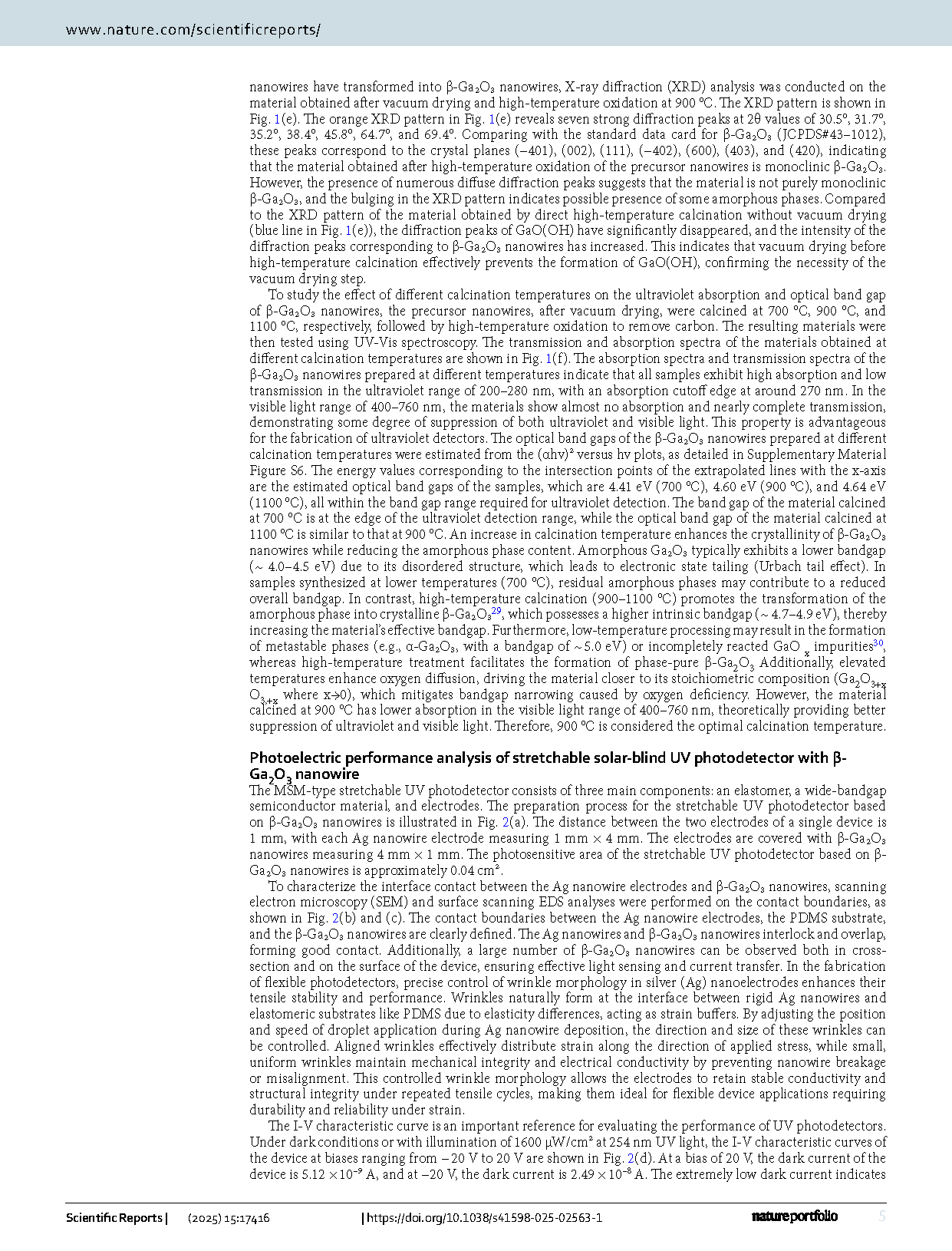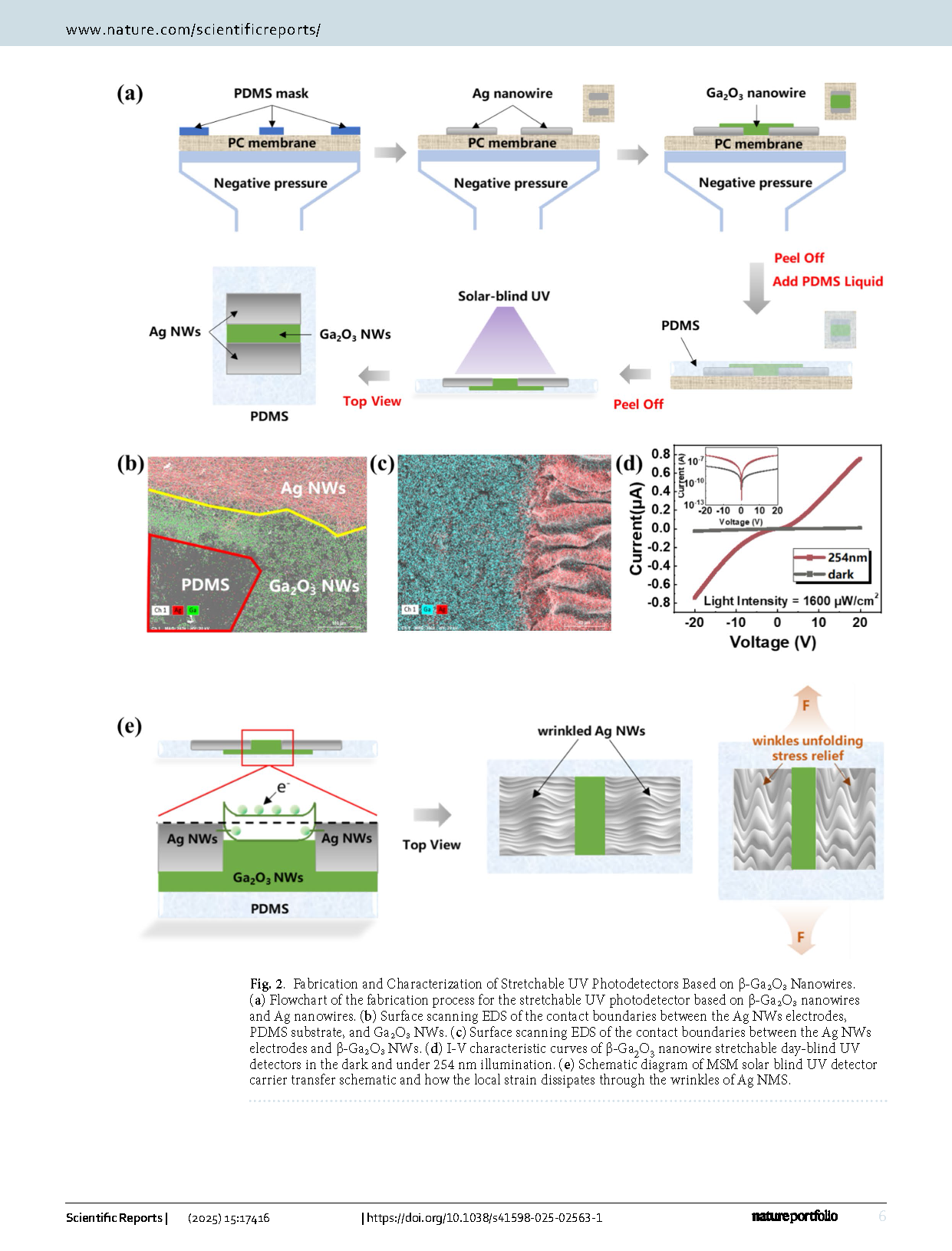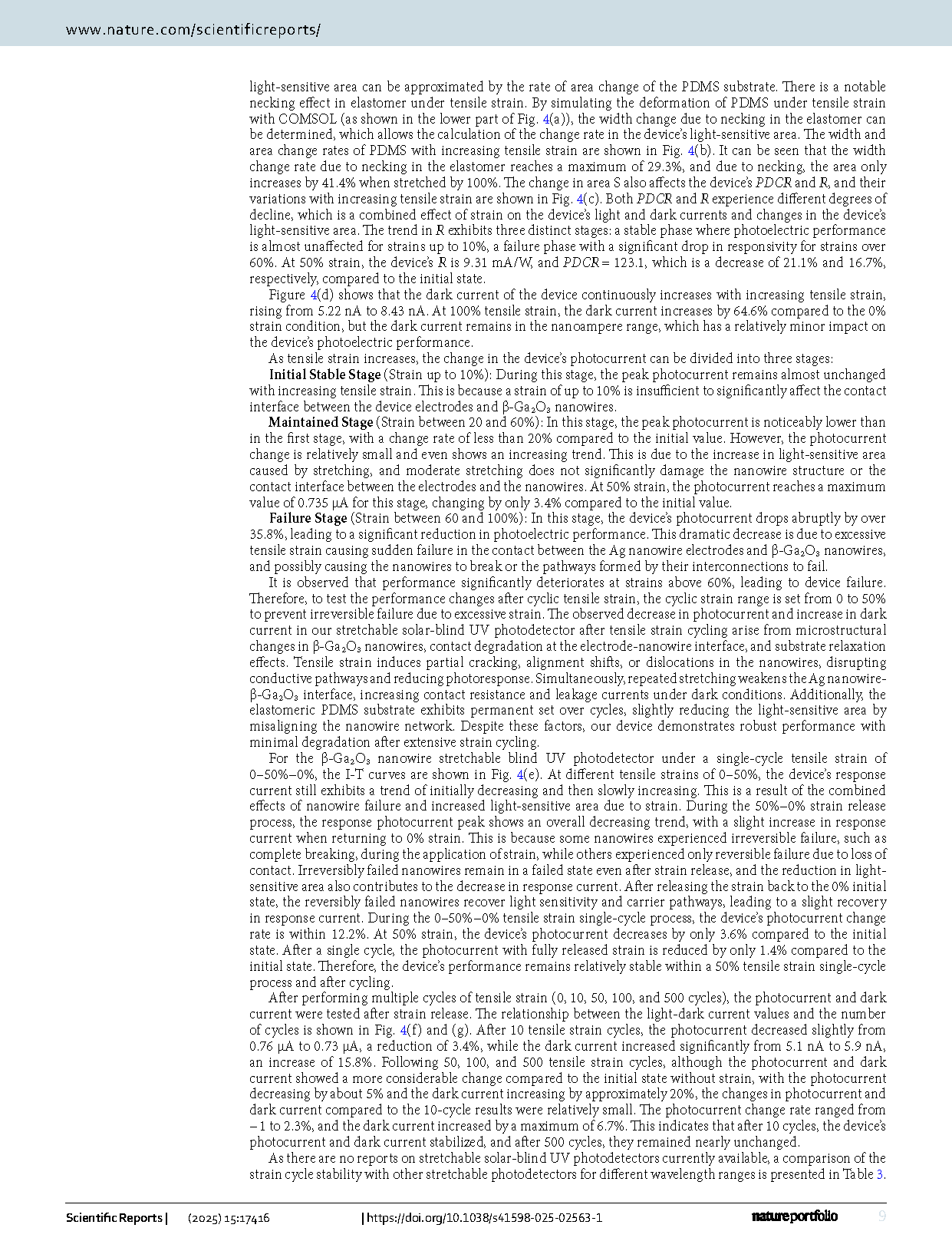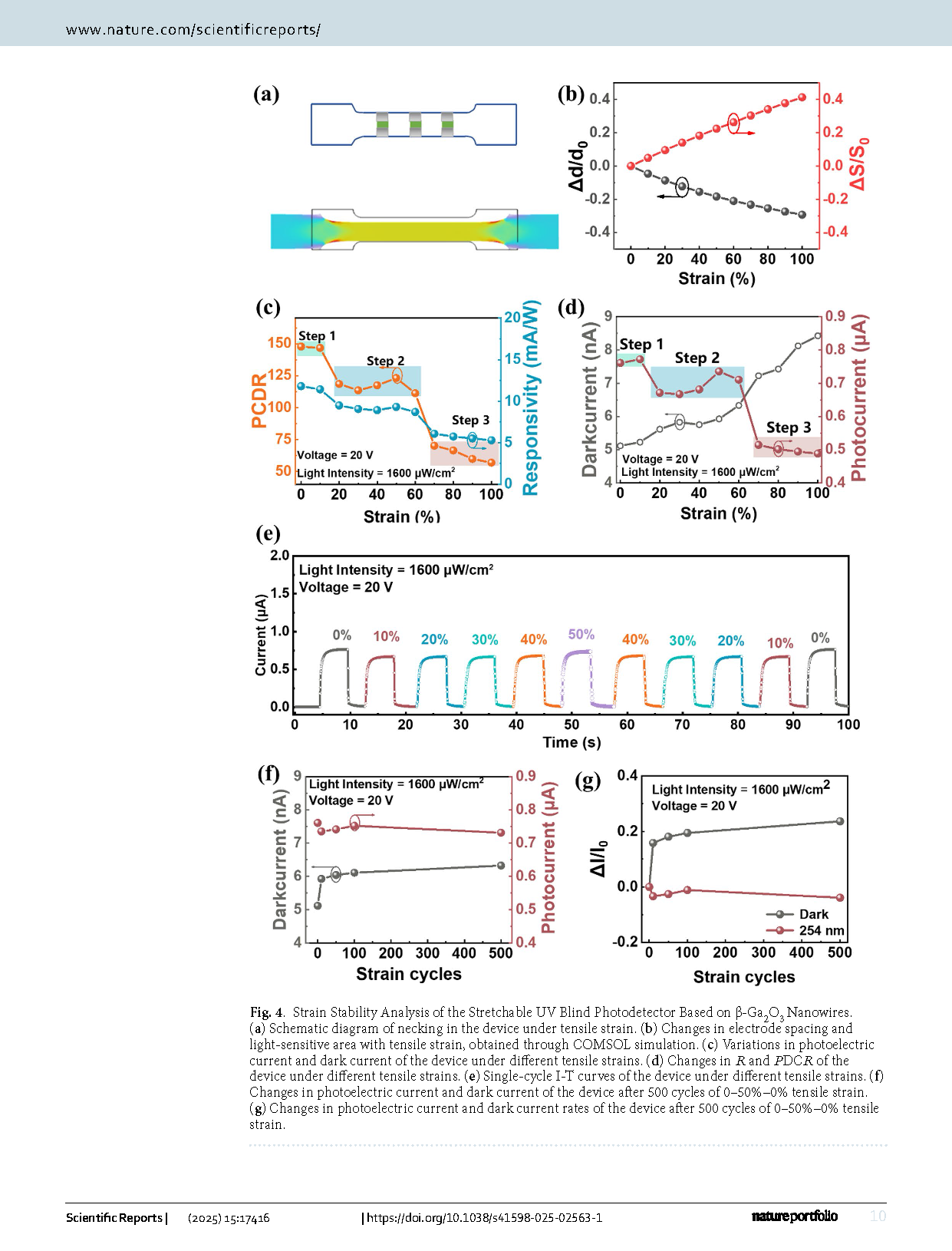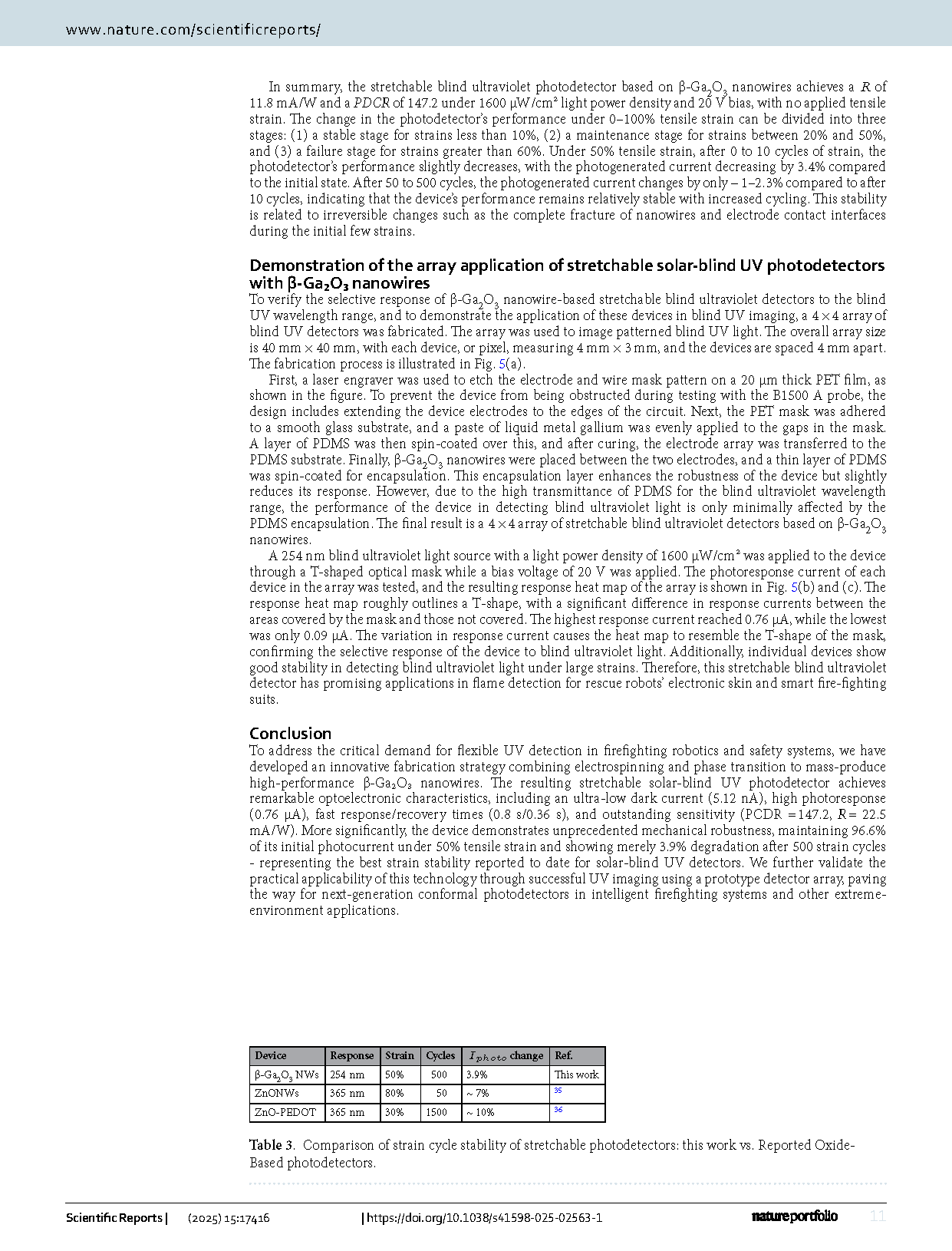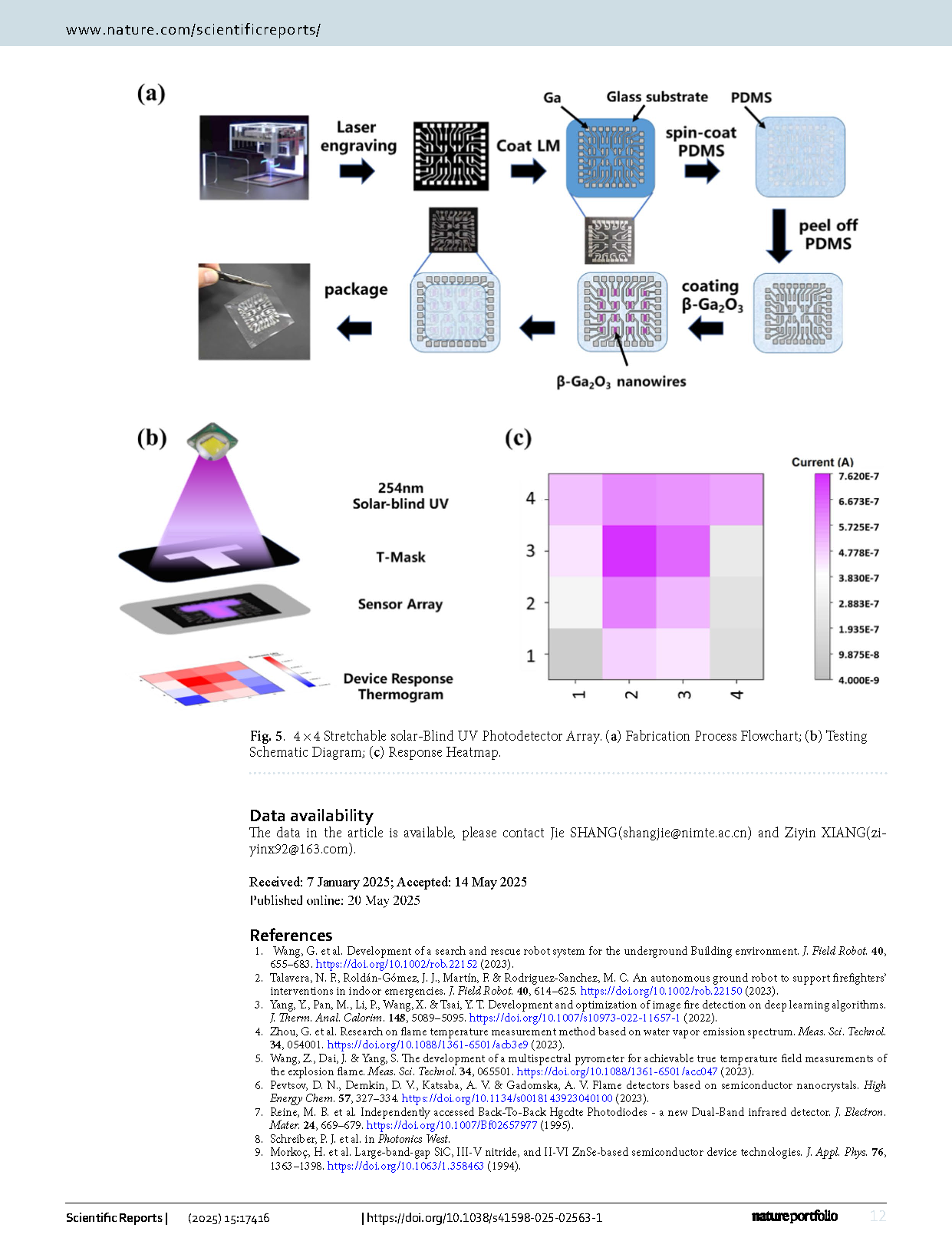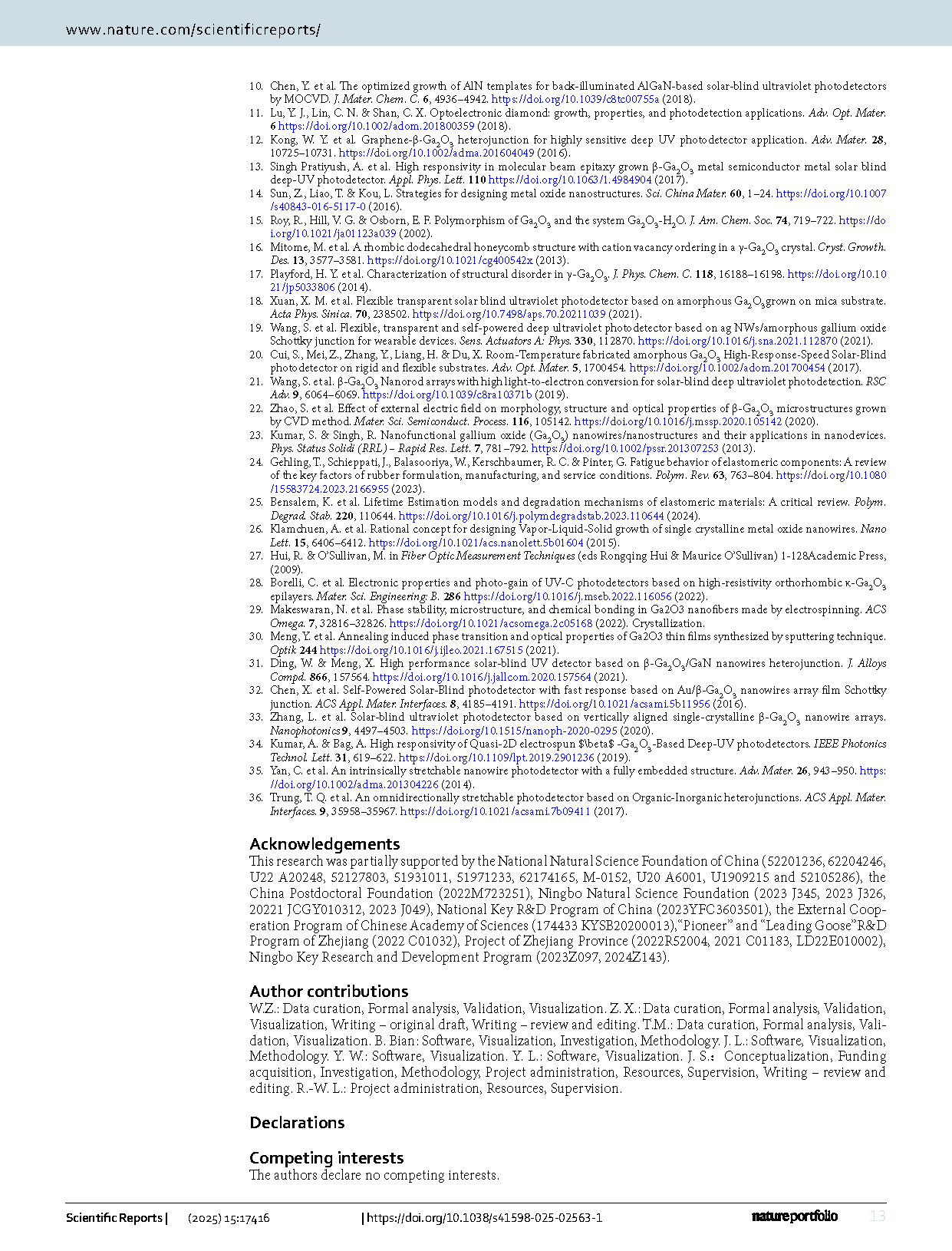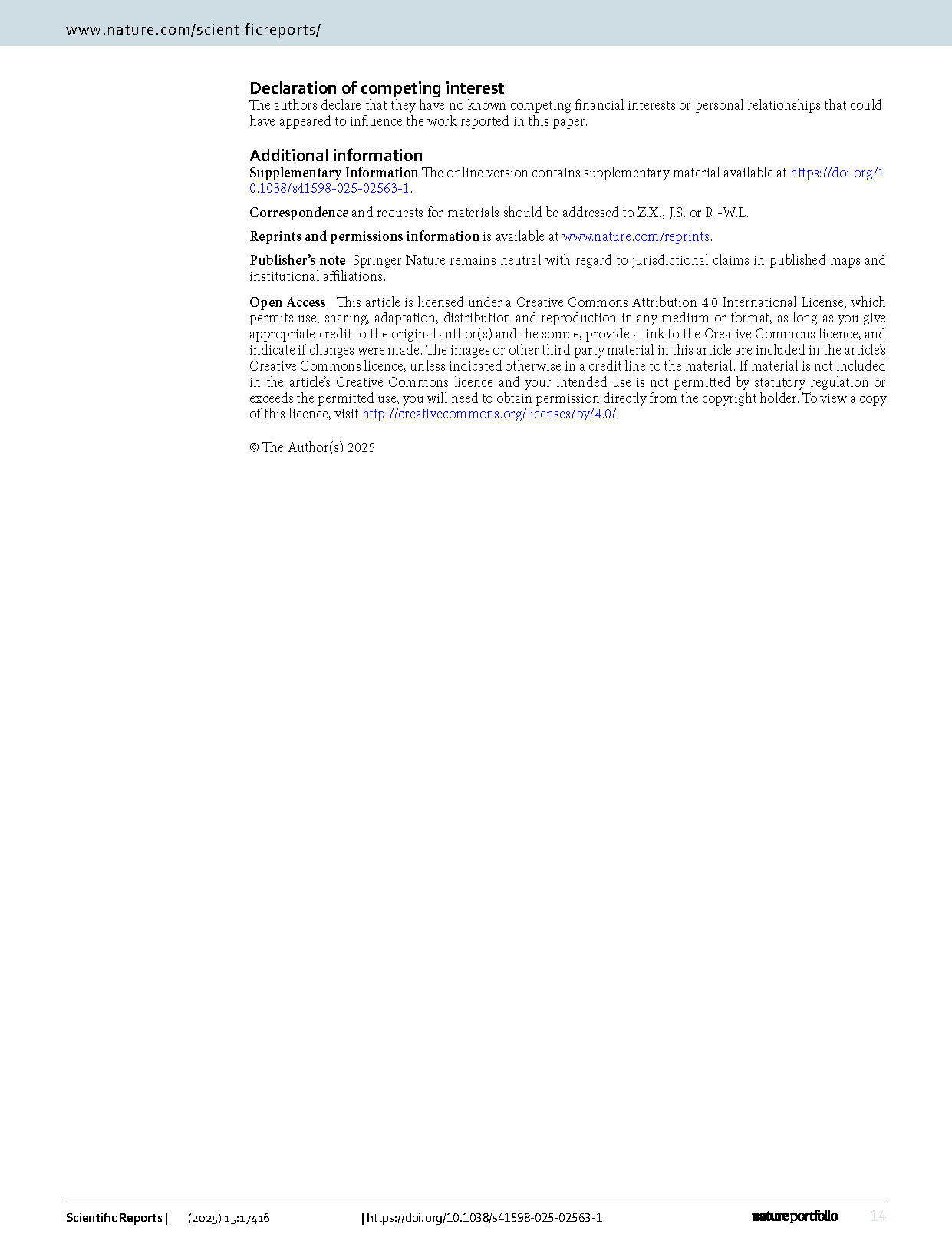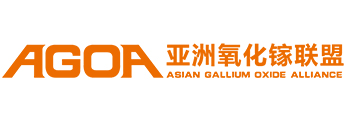

【Domestic Papers】 Ningbo Institute of Materials Technology and Engineering, Chinese Academy of Sciences --- Self-supported β-Ga₂O₃ nanowires and for stretchable solar-blind UV photodetectors
日期:2025-06-05阅读:472
Researchers from the Ningbo Institute of Materials Technology and Engineering, Chinese Academy of Sciences have published a dissertation titled "Self-supported β-Ga2O3 nanowires and for stretchable solar-blind UV photodetectors" in Scientific Reports.
Background
Flame detection is one of the core technologies that enables fire rescue robots to achieve intelligence and automation. It is primarily implemented through photoelectric detectors, image recognition sensors and temperature sensors. Compared with image recognition sensors and temperature sensors, photodetectors have the advantages of fast recognition speed, high recognition accuracy and strong anti-interference ability, which is a hot spot for research in this field6. However, although the spectral range of the flame is relatively wide, covering the entire band of ultraviolet (105–380 nm), visible (380–700 nm) and infrared (700–1000 nm), due to the fact that only 200–280 nm solar blind UV light in daylight is absorbed by the atmospheric ozone layer, only solar blind UV photodetectors based on this band are less affected by natural light, they obtain signals with high signal-to-noise ratios and low false alarm rates, and have been the dominant means of flame detection. At present, most of the solar-blind UV photodetectors are prepared by AlGaN, diamond and Ga2O3, but due to the difficulty in the preparation of AlGaN and the narrow response band of diamond, Ga2O3, which is thermally stable and has a high degree of solar-blind UV absorption, is the preferred material for the current solar-blind UV photodetectors, which are mainly presented in the form of blocks, thin films, and nano-materials, and Ga2O3 nanowires are highly valued because of their high specific surface area and good transport properties, which have attracted much attention.
Abstract
Fire rescue robots equipped with solar-blind UV photodetectors can significantly improve operational safety and efficiency in hazardous environments involving high temperatures, explosions, toxic gases, and smoke. However, conventional rigid photodetectors cannot meet the flexibility requirements for seamless integration with robotic systems. This study presents a breakthrough in developing stretchable solar-blind UV photodetectors through an innovative combination of electrospinning and high-temperature phase transformation. Our approach enables high-yield production of self-supporting β-Ga₂O₃ nanowires with excellent solar-blind UV absorption. The fabricated metal-semiconductor-metal (MSM) photodetector demonstrates outstanding performance, including a remarkable photo-to-dark current ratio of 147.2 and responsivity of 22.5 mA/W. More importantly, the device exhibits unprecedented mechanical stability, with merely 3.4% photocurrent variation under 50% tensile strain and only 3.9% degradation after 500 strain cycles. We further demonstrate the practical applicability of this technology by fabricating a functional photodetector array capable of solar-blind UV imaging, paving the way for next-generation intelligent firefighting systems.
Conclusion
To address the critical demand for flexible UV detection in firefighting robotics and safety systems, we have developed an innovative fabrication strategy combining electrospinning and phase transition to mass-produce high-performance β-Ga₂O₃ nanowires. The resulting stretchable solar-blind UV photodetector achieves remarkable optoelectronic characteristics, including an ultra-low dark current (5.12 nA), high photoresponse (0.76 µA), fast response/recovery times (0.8 s/0.36 s), and outstanding sensitivity (PCDR = 147.2, R = 22.5 mA/W). More significantly, the device demonstrates unprecedented mechanical robustness, maintaining 96.6% of its initial photocurrent under 50% tensile strain and showing merely 3.9% degradation after 500 strain cycles - representing the best strain stability reported to date for solar-blind UV detectors. We further validate the practical applicability of this technology through successful UV imaging using a prototype detector array, paving the way for next-generation conformal photodetectors in intelligent firefighting systems and other extreme-environment applications.
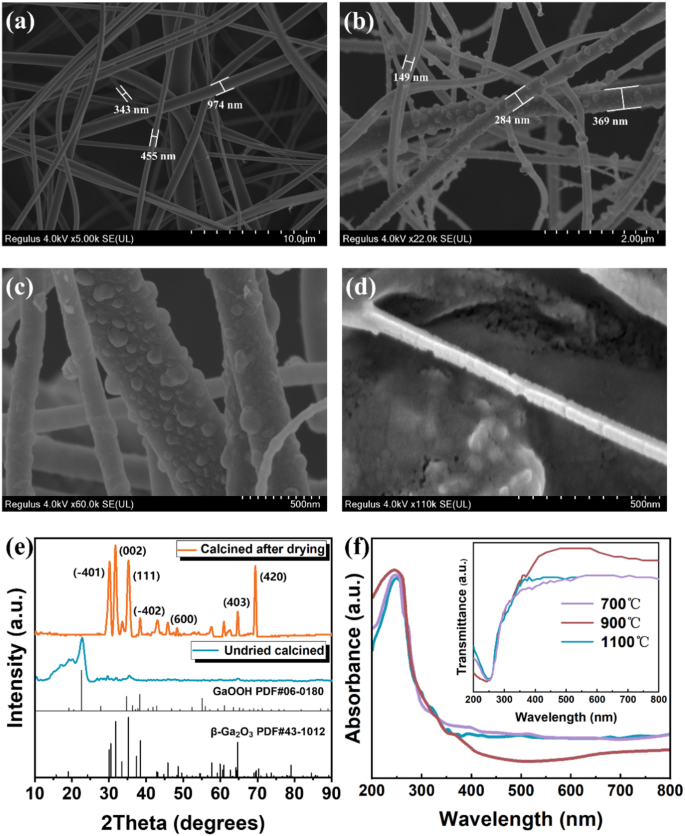
Fig. 1 Characterization of β-Ga₂O₃ Nanowires. (a) Microscopic morphology of the precursor nanowires after electrospinning and drying. (b) Microscopic morphology of Ga₂O₃ nanowires obtained after high-temperature phase transition. (c) Surface of the nanowires showing noticeable dense protrusions after calcination. (d) Microscopic morphology of pure β-Ga₂O₃ nanowires after multiple calcinations and removal of C residues. (e) Comparison of XRD patterns of materials obtained from dried calcination versus direct calcination. (f) Comparison of transmission spectra of materials obtained at different calcination temperatures.
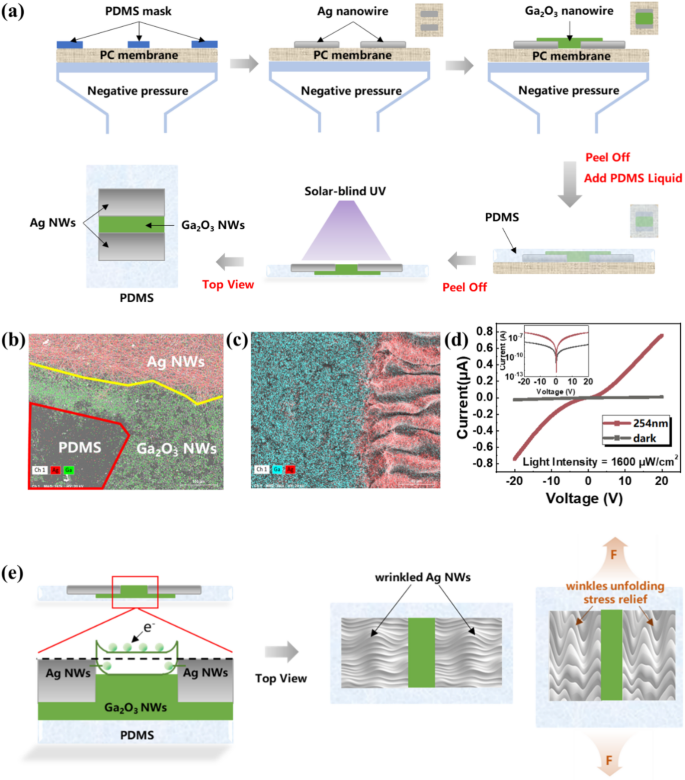
Fig. 2 Fabrication and Characterization of Stretchable UV Photodetectors Based on β-Ga₂O₃ Nanowires. (a) Flowchart of the fabrication process for the stretchable UV photodetector based on β-Ga₂O₃ nanowires and Ag nanowires. (b) Surface scanning EDS of the contact boundaries between the Ag NWs electrodes, PDMS substrate, and Ga₂O₃ NWs. (c) Surface scanning EDS of the contact boundaries between the Ag NWs electrodes and β-Ga₂O₃ NWs. (d) I-V characteristic curves of β-Ga2O3 nanowire stretchable day-blind UV detectors in the dark and under 254 nm illumination. (e) Schematic diagram of MSM solar blind UV detector carrier transfer schematic and how the local strain dissipates through the wrinkles of Ag NMS.
DOI:
doi.org/10.1038/s41598-025-02563-1
